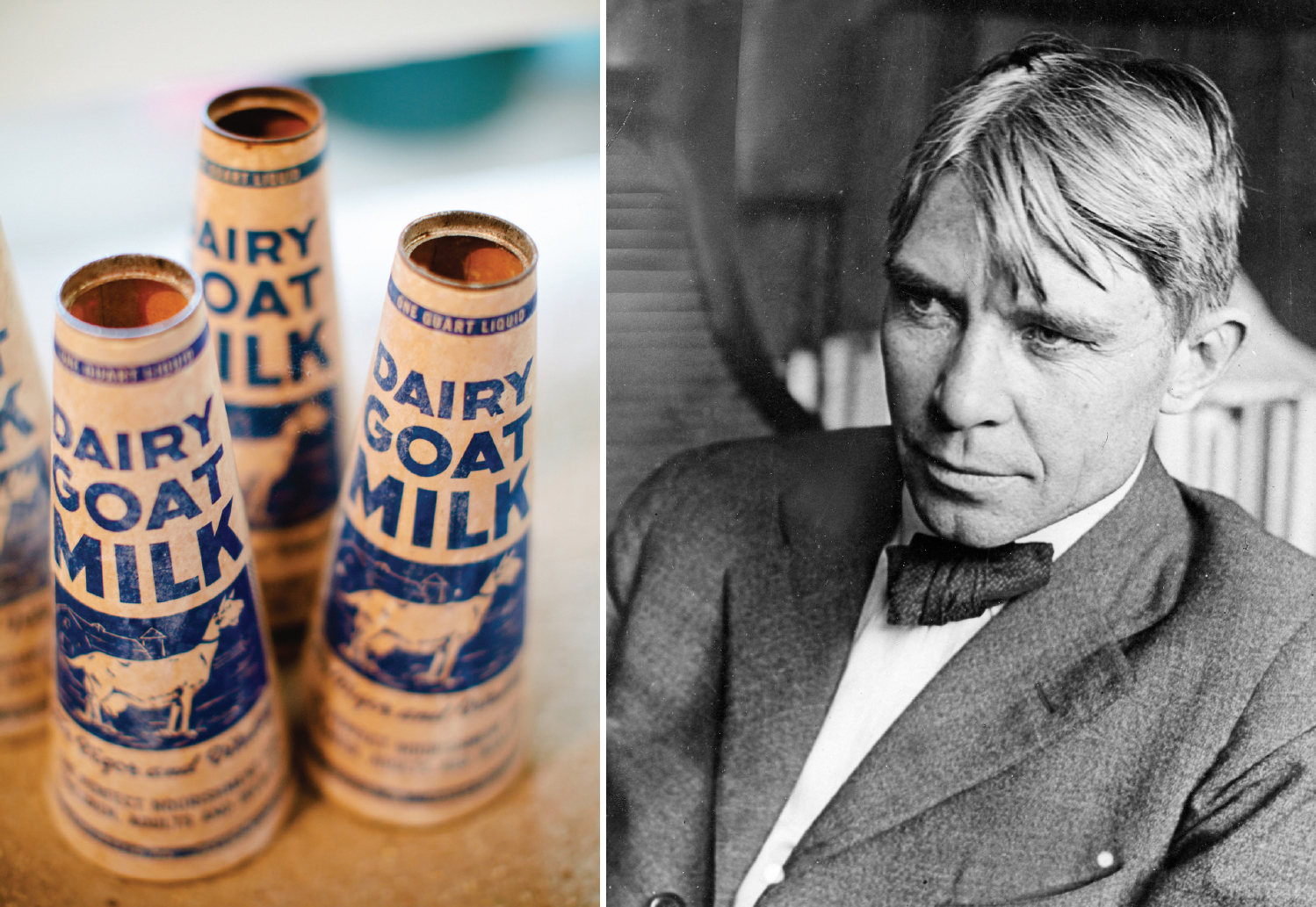
Carl Sandburg (photo courtesy of the National Park Service).
In 1945, the iconic American poet Carl Sandburg and his wife, Lilian — he called her “Paula” — moved to the Hendersonville area from a small farm on the shores of Lake Michigan. He died there in 1967.
A lot of people in the area wondered why this famous man had chosen our little community as his new home. He had paid what was thought to be an astounding price of $45,000 for 248 acres of land that included a three-story main house, a barn complex, and several outbuildings. Mr. Sandburg reportedly said he felt he’d bought an entire village. And Mrs. Sandburg, a breeder of champion milk goats whose descendants survive today, told friends that they now possessed “a million acres of sky.”
The estate, which the Sandburgs nicknamed “Connemara,” was once owned by C.G. Memminger, the first secretary of the Confederacy. I wonder if Mr. Sandburg, who picked up his third Pulitzer Prize for his multi-volume biography of Abraham Lincoln, knew this — or if he did, whether he found it somewhat ironic.

Dave Cooley’s business card from back in the day.
I collected his garbage
I was required to read some of the poet’s writings in high school, but the first time I came face to face with Carl Sandburg was an early morning at his home in Flat Rock. It was 1946.
I was 17, a junior in high school, and I had, along with John Shepherd, an older friend, established the first rural garbage-collection service in Hendersonville. Sandburg was a customer.
“Come on in,” he said, as I went to his kitchen door to pick up his garbage. I opened the screen door to his kitchen and went in. There were wads of paper on the floor in the small room just off the kitchen.

As a teenager, Dave Cooley started a garbage collection company with friend John Shepherd. He met Carl Sandburg when the poet became a customer. Photo by Tim Robison
“Please put those scraps in with your trash, son, and then we will have a goat-milk cocktail,” he said. I did what he requested and have thought at least a hundred times or more: “What if I had put those scraps into a separate sack and saved them for posterity?” There’s no telling what they would be worth today. Maybe the fact that I was a high-school youngster at the time caused me to think trash was trash. It did not occur to me that there could be any value in what was picked up from the floor.
I’ve wondered why the great poet even took notice of me and offered a kid picking up his trash a goat-milk cocktail. It could have come from his own recollections of being a lowly school janitor in 1899, when he was supporting himself at Lombard College in his hometown of Galesburg, Illinois. Or maybe he wanted to see if I could handle the challenge of drinking goat’s milk.
I can say firsthand that a goat-milk cocktail is no reward for good deeds. Goat milk smells to high heaven and tastes awful. But it was an honor to sit for a brief moment with the man recognized internationally as the greatest authority ever on Lincoln. Although I am a professed died-in-the-wool Yellow Dog Democrat, Abe Lincoln was my hero.
Famous Friends
Upon becoming head of the town’s chamber of commerce, I would receive an inquiry every year near the date of Lincoln’s birthday from some national or international media representatives about Sandburg and Connemara. Always, one of the TV networks or nationally circulated magazines would send someone, and sometimes a crew, to Hendersonville for three or four days to do a story.
One year, CBS sent Edward R. Murrow and Fred W. Friendly to do a piece on Sandburg for showing in prime-time news. I was able to meet with both of them on more than one occasion while they were in town. I even had the opportunity to help their crew with lighting, props, and other needs for their shooting. Mr. Sandburg was in his best form while they were here. He played the guitar and sung for them. He had them in his kitchen for a goat-milk cocktail.
It sure was impressive for me to be “a fly on the wall” during their conversations, and the shooting of the film that would eventually be used. I attended a seminar in Washington many years later, led by Fred Friendly, who remembered meeting Sandburg and recalled it fondly, saying, “It was one of the best shows I ever did.”
Another time, a LIFE Magazine photographer came to Hendersonville to do a photo essay on Mr. Sandburg. I spent two full days with him in my role as chamber-of-commerce executive — taking him to various places all over the county. Sandburg was set up to address the student body at Flat Rock High School. I was with the photographer back stage. When Sandburg took the stage the photographer began shooting, and he must have taken 100 shots. (No digital photography back then — what you shot was what you got.) Indeed, when I asked him the secret behind all of LIFE’s famous photos, he simply answered: “Take a lot of them.”
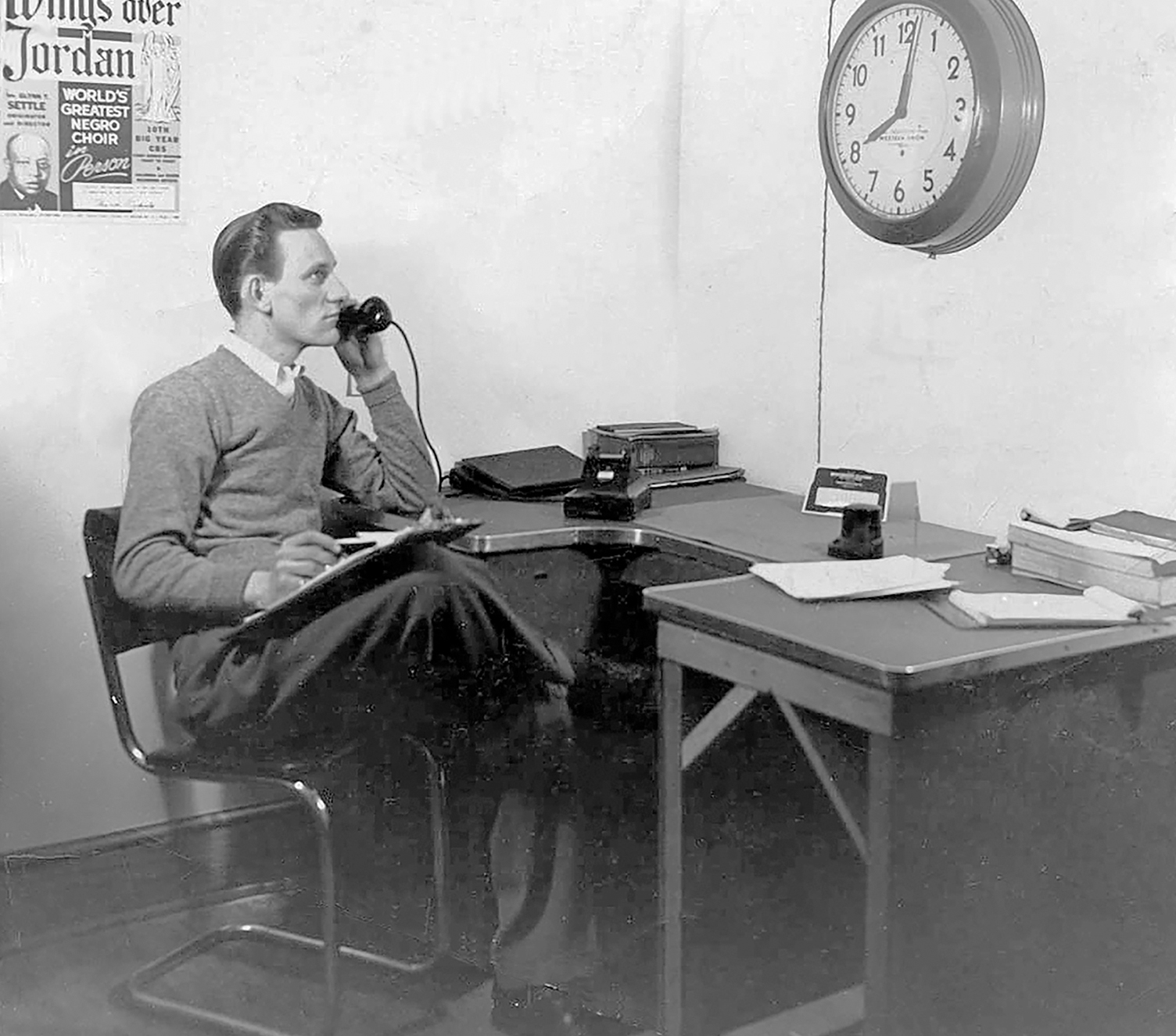
Dave Cooley is pictured in his office in the Nuckolls Building, circa 1947.
No curtains on the windows
I asked Mr. Sandburg one day why there were no curtains on the windows in his home. He told me very quickly why: “Windows are to frame the beauty outside, while curtains spoil that beauty.”
Technology vs. Sandburg
The first remote-controlled floor-model TV I saw was at Connemara. It had been given to Carl Sandburg by his good friend, the president of Zenith Corporation. I was told that Mr. Sandburg gracefully accepted his friend’s gift, although he was not a big fan of television. He believed it to be “a thief of time.”
Rotary Club speech
Probably my last time observing Sandburg was when he was scheduled to be the speaker at the local Rotary Club luncheon. Beverly Middleton, the Chamber president, was a neighbor of Sandburg’s. He was very excited about getting the poet to appear before his club members and offer a speech. Sandburg came with guitar in hand. “Bevo,” as Middleton was called, gave a flowery and overly generous introduction. Sandburg rose from his chair, picked up his guitar, walked quietly to the podium, hit a couple of chords and sung a short song. He then spoke for about five minutes and offered another short tune or two. Much to the amazement and disappointment of the audience, Sandburg then sat down. He had finished! It could be recorded as probably the shortest presentation by anyone in the history of the local Rotary Club. Bevo was embarrassed.
Autograph for my daughter Ann
Sandburg’s secretary, Mrs. Johansen, was my across-the-street neighbor. I ask her if she would take the poet’s first volume on Lincoln that I had purchased and ask him to autograph it for my daughter. He did it willingly for his secretary and told her I could pick it up the next time I came to collect the garbage. My daughter treasures his autograph to this day. The inscription reads ”Happy days for Dave Cooley’s beautiful daughter, Ann, and a bountiful life — Carl Sandburg.”
More Sandburg Ephemera
Wick Andrews, a native of Flat Rock, tells the story of his father and other gentlemen having frequent social times with Sandburg. They would drink single-malt scotch and “sing into the night.” I was told that Sandburg loved these get-togethers and encouraged them at every opportunity.
Louise Bailey, a county historian, frequently referenced her time with Sandburg. Copying his manuscript of “Remembrance Rock” while using her “two finger hunt-and-peck system” on his manual typewriter was a favorite of hers.
Sandburg was very proud of the Connemara Farms square-dance team started by one of his farm’s supervisors, Frank Mintz — especially the year they won the square-dance contest at the 1948 North Carolina Apple Festival and were invited to spend a week in his native Chicago, as guests of Rock Island Railroad, during the Chicago Railroad Fair.
Bill Sharpe, editor of Our State magazine, visited Sandburg once during spring. He received permission from Sandburg to photograph him with his wife’s goats and at several other locations on the grounds of Connemara Farm. One picture stood out in the mind of Editor Sharpe. It was Sandburg feeding a goat with a baby bottle of milk. The shot was picked up by the Associated Press Wire Service and ran in more than 100 daily newspapers across the country. Great publicity for Hendersonville that money could not buy.

A descendant of Sandburg’s goat herd. Photo by Tim Robison
Connemara Today
I go to Connemara three or four times a year now. It has long been owned by the National Park Service. Employees continue to care for descendants of Mrs. Sandburg’s original goat herd. The times I have been in the house, still as modestly appointed as it was in Sandburg’s day, remind me of the great man and his Lincoln works. I can almost hear him saying, “Let’s have a goat-milk cocktail, son.”
Two weeks of events of the Carl Sandburg Home National Historic Site, aka Connemara, will celebrate the 100th anniversary of the National Park Service. These include a Sandburg Singalong at 6pm on September 9 at the Henderson County Visitor Center Stage, a Hobo Ball at 6pm on September 17 at the Sandburg Home, a showing of The Day Carl Sandburg Died at 6pm on September 19 at Flat Rock Cinema,and more. For a full list, see nps.gov/carl or call 828-693-4178.

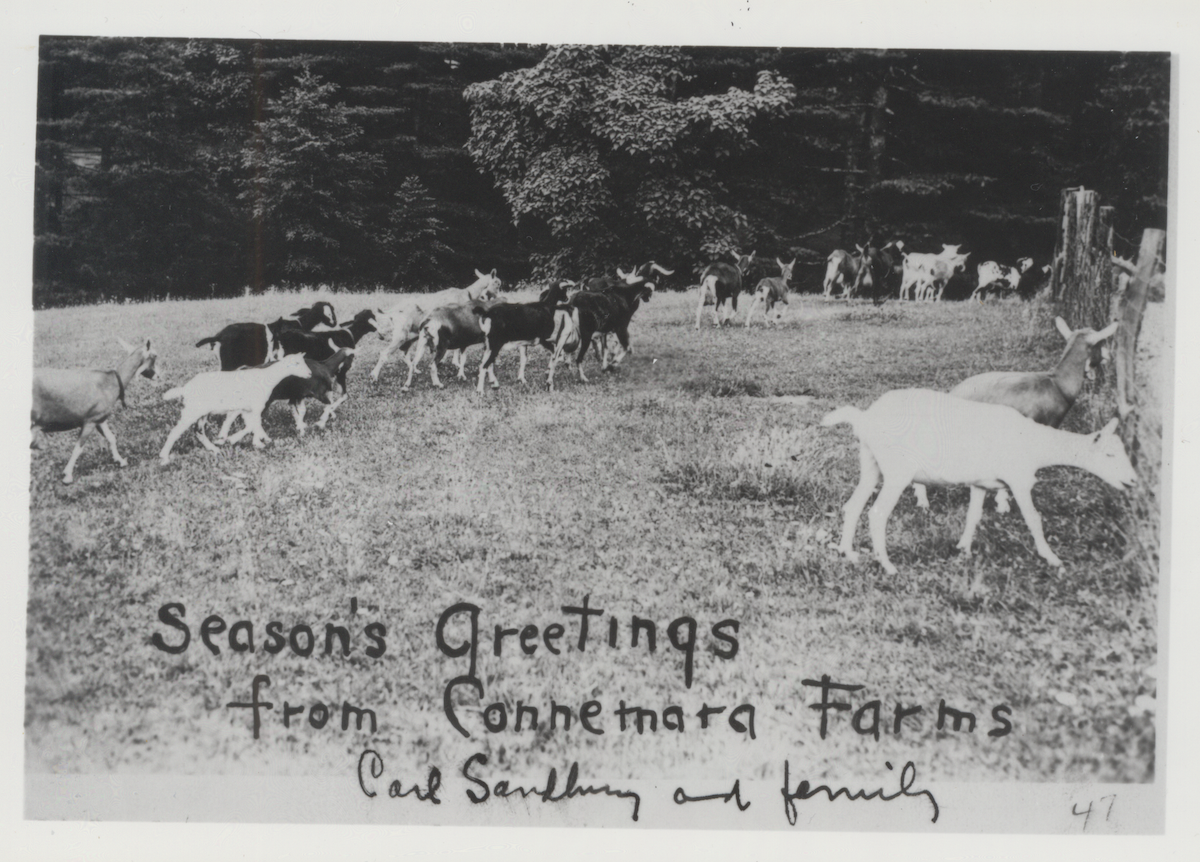
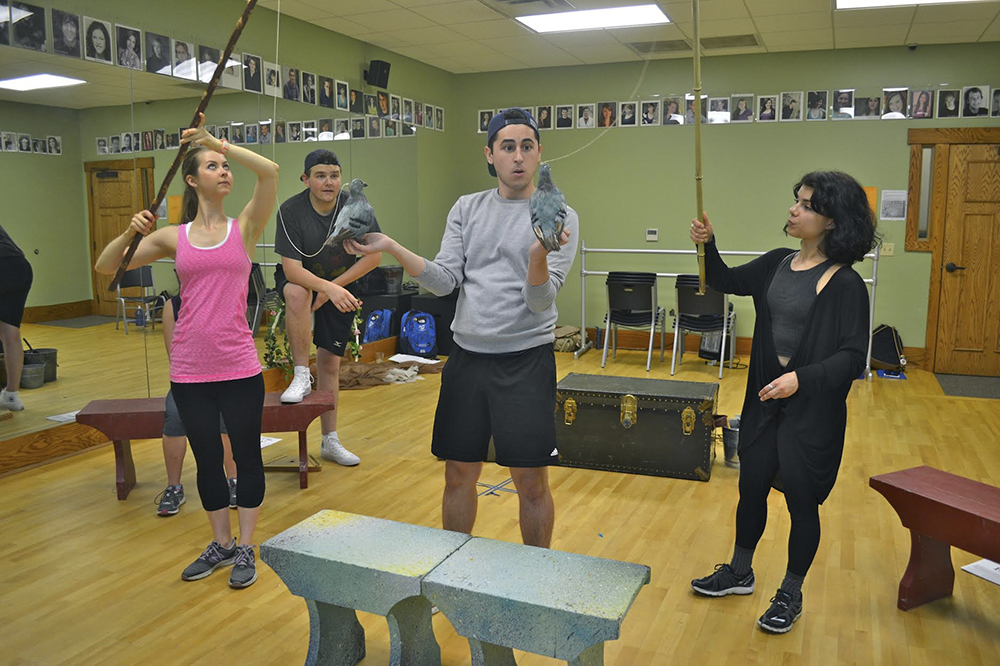
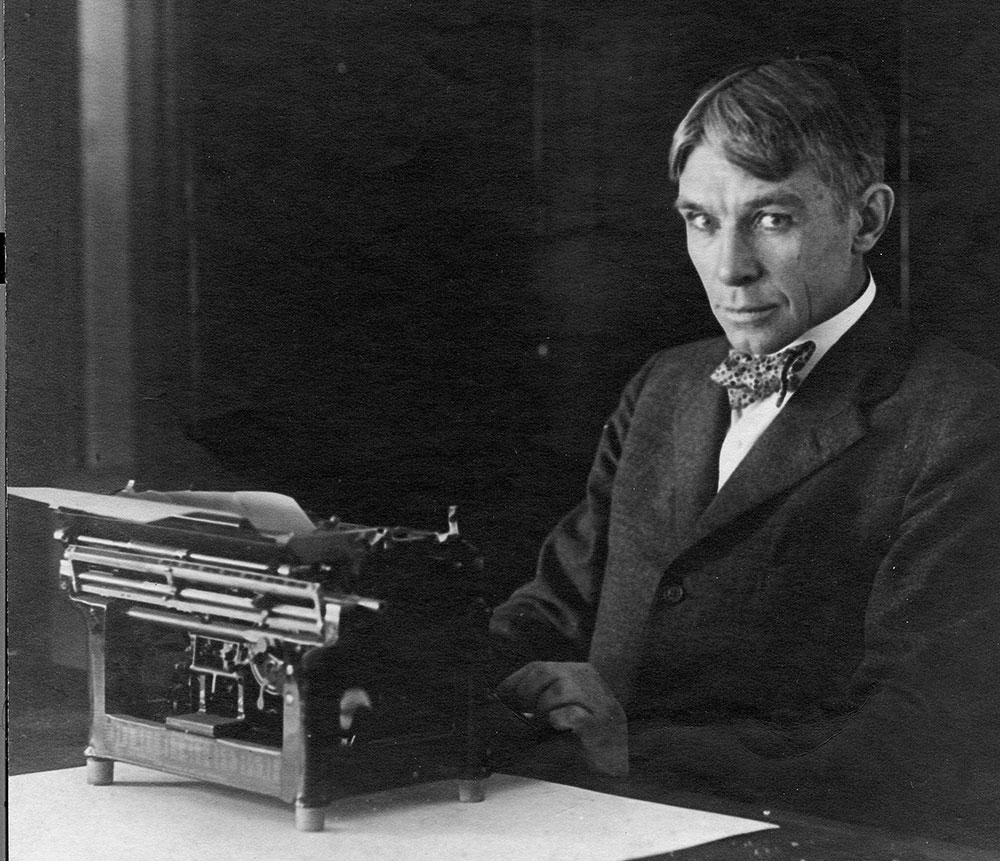
Great Story Dave!!!
What a Blessing to make his acquaintance, pick up his trash and share goat milk cocktails!!!
Thanks Friend for sharing your precious memory!
Dick Rush
Dave: As far as I can recall you never told your contacts among chamber of commerce executives your story/stories about Carl Sandburg. Had I been in your place I would have spoken long and loud about the wonderful man. My experience with goats milk is similar to those that don’t like the smell or taste. Cheese from goats milk however is not bad.
Like you I can’t imagine throwing Sandburg’s notes and scriblings out with the garbage. Think what a treasure you would have if you had kept them. Thanks for your very interesting narration. Hope all is well with you.